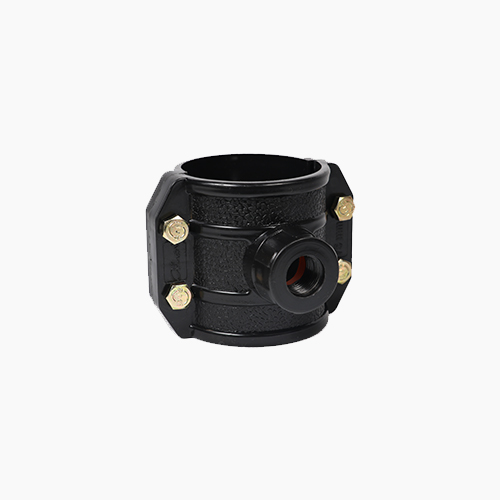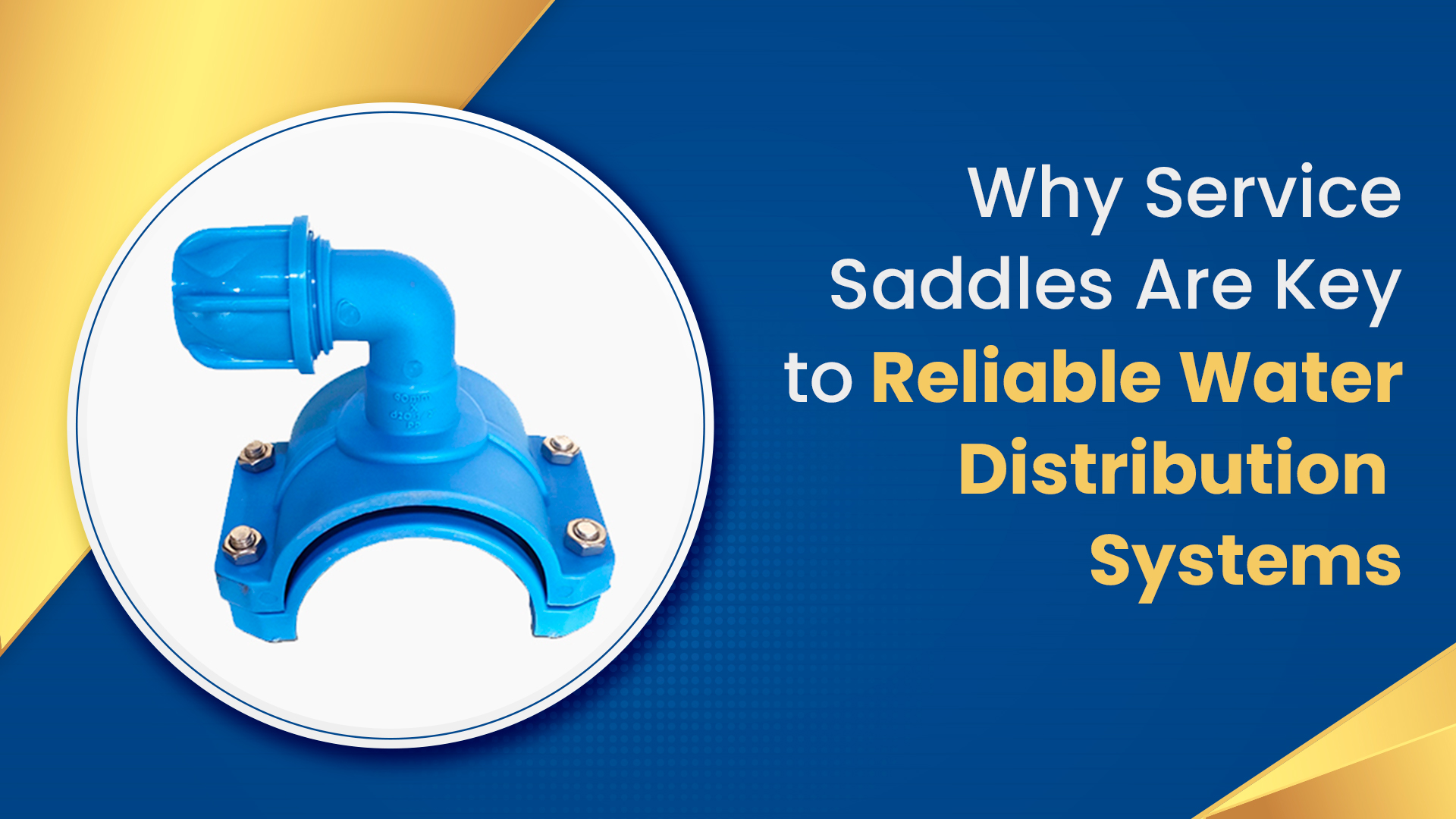Think about the last time you switched on a faucet. Water poured out—no big problem, right? But behind that simple motion lies a network of pipes, fittings, and connections that function together. What happens when things goes wrong? That is when you understand how significant the small details are.
Enter the plumbing integrated saddle. It is a necessary component of every functional plumbing system. Without it, installing new water lines or correcting leaks would be a far bigger burden.
Why This Matters?

- Service saddles let plumbers tap into existing pipes without cutting them apart.
- They create secure, leak-proof connections in minutes.
- From home repairs to city water systems, these fittings keep everything flowing smoothly.
You probably never notice them, but saddle pipe fittings are quietly doing their job every single day. Think about the last time you added an outdoor faucet or fixed a leaky pipe. There is a good chance a service saddle was the real hero of that repair.
This goes much beyond simply carrying water through pipes. It is about solving plumbing problems in the best way possible. Let’s take a deeper look at how something so simple may make such a difference in your plumbing.
What Is a Plumbing Saddle?
You know when you need to add a new water line but don’t want to cut up your whole plumbing system? That is where a plumbing saddle comes in. Picture it like a clever little clamp that hugs your existing pipe tight. It lets plumbers tap into your water line without all the messy cutting and replacing.
Here is how it works: The saddle pipe fitting comes in two pieces that wrap around your pipe like a hug. There is a rubber gasket sandwiched in between – that is what keeps the water from leaking out. When the plumber tightens the bolts, that gasket gets pressed snug against your pipe, creating a perfect seal.
Then comes the magic part. They drill a neat hole right through the saddle’s outlet. Suddenly, water can flow into your new branch pipe like it was always meant to be there. No major pipe surgery needed. Just a smart solution that gets the job done quickly. It is one of those simple ideas that makes you wonder why all plumbing fixes can’t be this simple.
Why Use a Plumbing Saddle?
You might wonder, why not just cut the pipe and add a T-joint? Well, using a plumbing saddle has some clear advantages:
- It saves time because you don’t have to remove or replace pipe sections.
- It lowers the chance of harming the main pipe during installation.
- It produces a leak-proof link that can withstand pressure.
What Is a Saddle Pipe Fitting?
The term saddle pipe fitting often refers to the same thing as a plumbing saddle. It’s a fitting that “saddles” or wraps around a pipe to create a branch connection. Sometimes, saddle pipe fittings come with valves built in, called saddle valves. These valves let you control water flow from the new branch.
Saddle valves are common for small jobs, like adding water to an ice maker or humidifier. They clamp onto copper pipes and pierce the pipe wall when you turn the valve. But be careful — some plumbing codes don’t allow saddle valves because they can be less reliable over time.
How Do Service Saddles Help Plumbing Systems?
Service saddles are a special kind of plumbing saddle designed for main pipelines. They are used in water, gas, and chemical systems to create branch lines safely and efficiently. Here is what makes them useful:
- Prevent leaks: They seal firmly around the pipe. This prevents water or gas leakage.
- Distribute pressure: By spreading the stress evenly along the pipe, they lessen the likelihood of cracking.
- Save water: Tight seals reduce water loss. This is critical for irrigation and municipal systems.
- Make repairs easier: You can add or replace connections without disassembling the entire system.
- Cut installation time: Clamping on a service saddle is faster than cutting and welding pipes.
If you have ever seen a water main with smaller pipes branching off, chances are service saddles were involved.
What About Pipe Saddles?
Now, pipe saddles are a different thing. Pipe saddles provide support for pipes, whereas plumbing saddles form new connections. Consider a pipe resting on a metal bracket that supports it and keeps it from sliding. That is a pipe saddle.
Pipe saddles:
- Hold pipes in place to prevent damage from vibration or movement.
- Lift pipes above surfaces to avoid corrosion from moisture.
- Help align pipes properly during installation.
- Use materials like PTFE or graphite to reduce friction where pipes rest.
- In big plumbing or industrial systems, pipe saddles keep everything steady and safe.
Plumbing Saddles vs. Pipe Saddles: What’s the Difference?
It is easy to confuse plumbing saddles with pipe saddles because of the similar names. Here is a quick comparison:
| Feature | Plumbing Saddle / Service Saddle | Pipe Saddle |
| Purpose | Create branch connections on existing pipes | Support and cradle pipes structurally |
| Function | Clamp onto pipe and provide outlet for branch | Hold pipe in place and transfer load |
| Leak Prevention | Yes, seals pipe to prevent leaks | No, mainly structural support |
| Installation Location | On the pipe where branch is needed | At pipe supports or anchor points |
| Materials | Usually metal or plastic with rubber gasket | Metal with base and sometimes cushioning |
Why Should You Care About These Saddles?
They are the reason your plumber doesn’t have to tear apart your whole house just to add a new water line. Imagine wanting to install that new fridge with the ice maker – without these saddles, it would mean cutting pipes and major construction. Instead, it’s often a quick job.
That rubber-sealed connection? That is what keeps drips from turning into expensive water damage down the road. We have all seen what leaks can do to walls and floors. These fittings help stop problems before they start.
And here is something you will appreciate – they save you money twice over. First on the installation (less labor time), then again by preventing future leaks. In areas with water shortages, they are actually helping conserve a precious resource by keeping every drop where it belongs.
The pipe saddles play defense too. They are like bodyguards for your plumbing. They prevent wear and tear that leads to bursts and floods.
Final Words
Plumbing systems only work when every piece does its job—and service saddles are one of the most underrated heroes. They make installations faster, repairs easier, and systems more reliable.
Next time you are tackling a plumbing job, don’t overlook these clever little fittings. A saddle pipe fitting could be your secret weapon for an easier, cheaper repair.Because at the end of the day, good plumbing isn’t just about water flow—it is about peace of mind.
FAQs
1.What is the purpose of a pipe saddle?
A pipe saddle supports and stabilizes pipes. This prevents movement, sagging, or damage. It acts like a sturdy bracket, keeping pipes secure and properly aligned.
2.What is the use of a service saddle?
A service saddle creates a new branch connection on an existing pipe without cutting or replacing it. It’s commonly used to:
- Add water lines
- Repair leaks
- Connect irrigation systems
3.What is a saddle in plumbing?
In plumbing, a “saddle” refers to a fitting that either supports a pipe (pipe saddle) or taps into it (service saddle). It helps maintain leak-free plumbing systems.
4.What is the most important part of a saddle?
Without the rubber gasket, the connection could leak. This results in water waste or damage. For pipe saddles, the clamping mechanism is key to keeping pipes stable.



